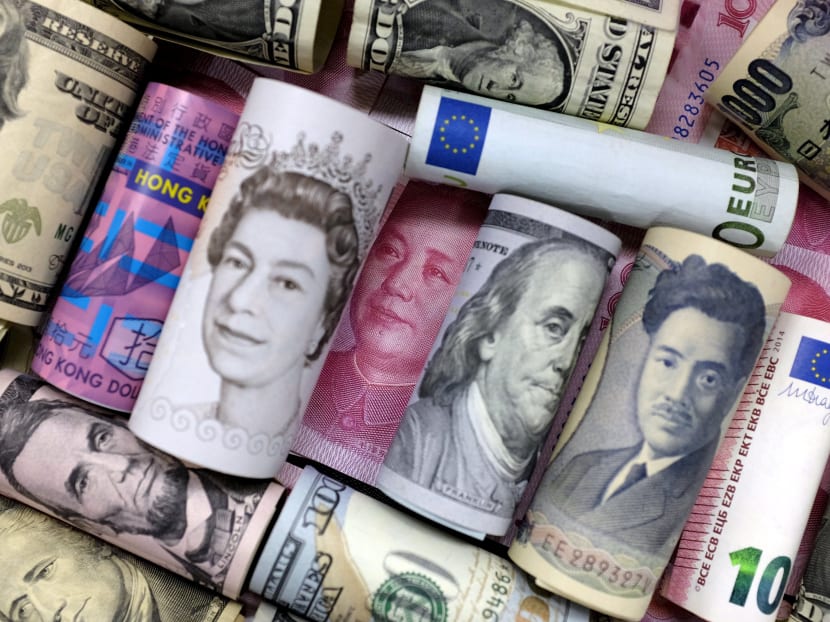Consider requirements, risks before trying forex trading
Foreign currency trading can seem like a way to make millions or even billions. Indeed, George Soros made more than US$1 billion in 1992 by betting against the British pound and secured his reputation as one of the best currency speculators anywhere.

Reuters file photo
Foreign currency trading can seem like a way to make millions or even billions. Indeed, George Soros made more than US$1 billion in 1992 by betting against the British pound and secured his reputation as one of the best currency speculators anywhere.
Foreign exchange (forex) trading is, however, more difficult than it looks. Only about 30 per cent of all retail forex trades are profitable, according to Aite Group, because most retail traders do not have the education and experience to succeed in a market dominated by large financial institutions with scads of experienced traders.
Even the experts can have challenges. Taking an example close to home, Maybank said in its FX Insights in September 2014 that it forecast a US dollar (USD)-Malaysian ring-git (MYR) exchange rate around 3.13 towards the end of 2014 and followed that in June 2015 with a forecast of 3.60 by the end of 2015. The ringgit eventually plunged to more than 4.30 to the USD and anyone who followed it down could have lost more than 25 per cent.
In another example, while Goldman Sachs forecast in late 2014 that the Japanese yen would drop to a USD-yen rate of 130 by the end of 2015, the rate was at about 120 at year-end and the yen has risen further in 2016.
HOW TO TRADE
Despite the risks, many retail investors still want to trade foreign currencies.
For people who do want to trade, the first step is to learn how it works. There are a variety of online courses and tutorials available, including free ones at trading sites such as Oanda. It is important, though, to be cautious and select the right ones. As the Monetary Authority of Singapore said in MoneySense, “if someone offers to help you make amazing and consistent returns by teaching you all about forex trading: be cau-tious! Sounds too good to be true? That’s because it is.”
Many factors influence foreign exchange rates, so extensive and continuous research and analysis is also important for figuring out where rates will head and when to trade. Announcements by governments, central banks, forex experts and other market influ-encers have a big impact on rates, so scrutinising the news is essential. Forex brokers offer trading platforms that often includes real-time charts, news, data and technical tools which traders can use for their analysis.
Foreign currencies trade in pairs, such as Singapore dollar-USD or euro-pound, and traders can select from dozens of choices. While the most widely traded pairs with the lowest costs include euro-yen, euro-pound, euro-USD and USD-yen, other pairs with more volatile fluctuations may lead to higher return. Many traders select just a few pairs so that they can focus their research more precisely.
Currency investors will also need to decide whether to make short-term trades by the minute or second, or to hold their position for days or months. Both strategies offer risks or high returns. Timing the trades right is essential regardless of the strategy, however, as forex rates can gyrate by 2-3 per cent in a single day and minute-by-minute volatility can lead to large profits – or losses.
Once you understand the fundamentals of forex trading, experts advise practicing for at least several weeks using a simulated account. Banks, brokers, and specialists such as CMC or Oanda offer simulated accounts which you can use both to test whether trading is actually for you and to decide which broker to use.
WHICH CURRENCIES ARE BEST
The outlook for currencies changes constantly, so forecasts of which currencies offer the best opportunities can be out-of-date almost as soon as they are posted online. Still, a snapshot as of mid-February offers samples of the outlook.
A DBS Bank forecast for the pound-USD pair said there is no evidence that the broad bearish trend for the pound has gone away, for instance, while OCBC said USD-yen is not likely to revisit its low of 110.98 in a hurry and further moves back towards 114 cannot be ruled out. National Australia Bank said that it expected the Australian dollar and New Zealand dollar to perform strongly. And currency expert Marc Chandler com-mented on his marctomarket.com blog that speculators seemed to sense a bottom in the Mexican peso.
Forex trading is fast-paced and requires round-the-clock attention to the markets as well as rapid decision-making, as MAS describes it, and forecasts will have changed by now. Anyone who trades will need to watch the markets constantly and adjust their strategy frequently.
As US News aptly summarised the opportunity, taking a do-it-yourself approach to foreign exchange investing resembles a stab at handling your own plumbing: You may be able to do it, and perhaps do it well. But that doesn’t mean you should, especially when the chances of springing a leak or flooding your financial foundation run high.





